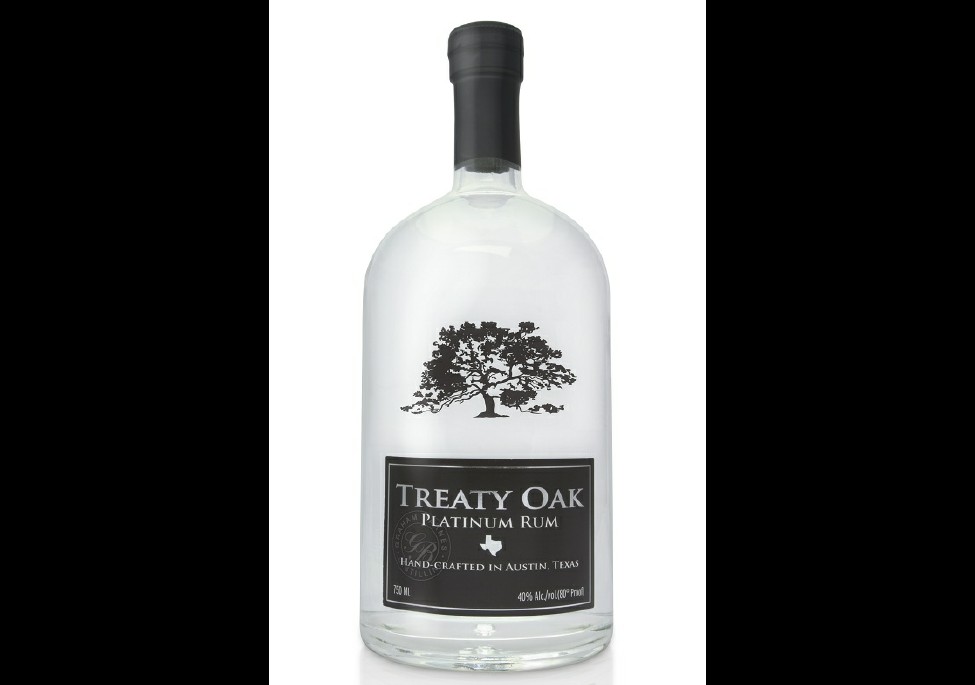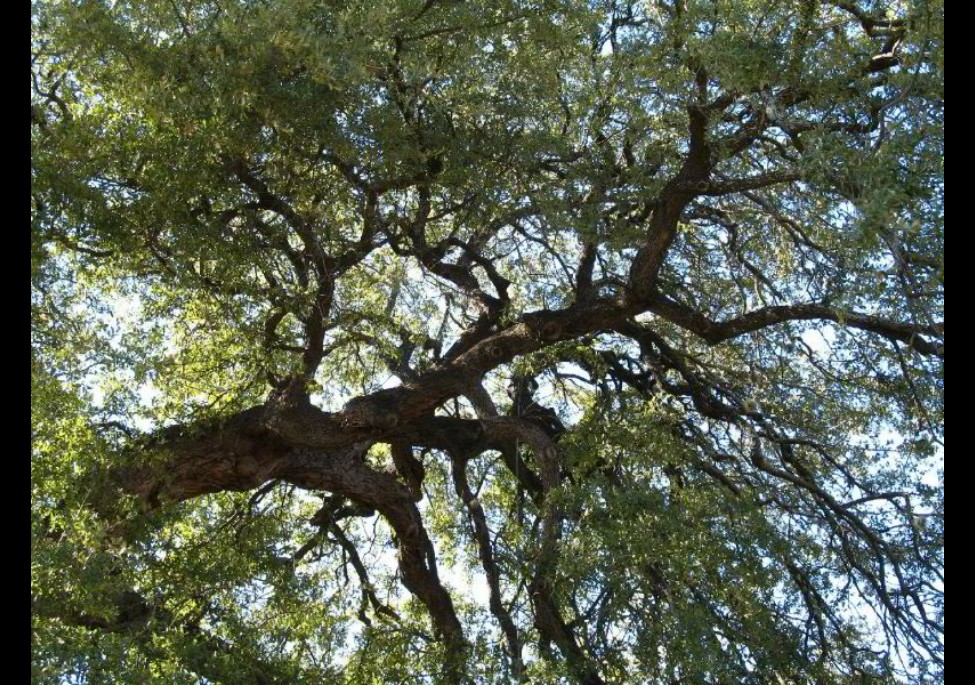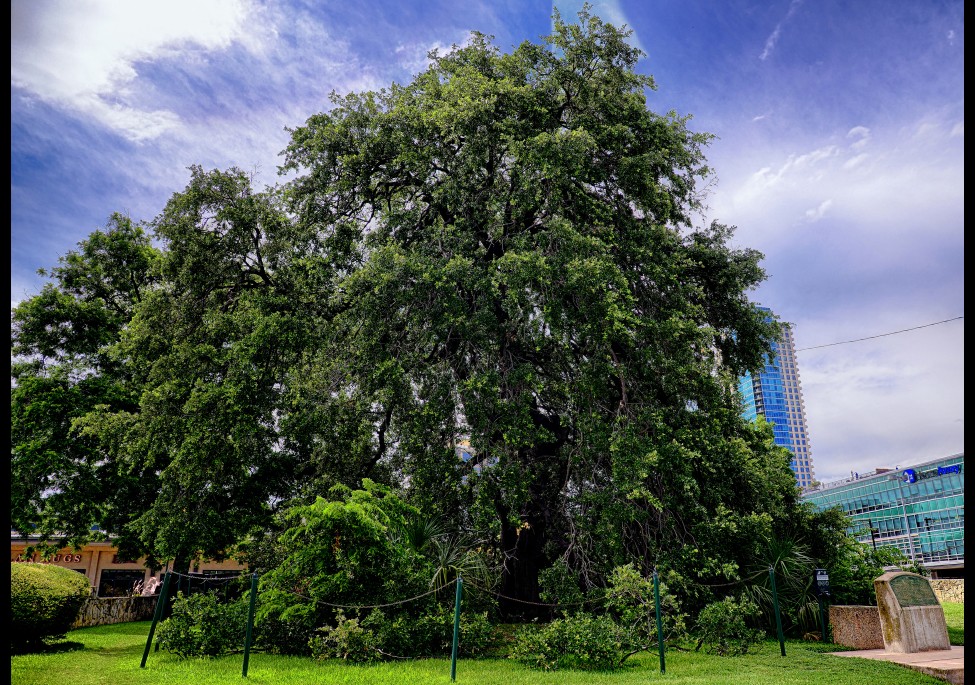
What) The Treaty Oak, a once-majestic Southern live oak, is the last surviving member of the Council Oaks, a grove of 14 trees that served as a sacred meeting place for Comanche and Tonkawa Tribes. Foresters estimate the tree to be about 500 years old and, before its vandalism in 1989, it's branches had a spread of 127 feet.
A Native American legend holds that the Council Oaks were a location for the launching of war and peace parties. Legends also hold that women of the Tejas tribe would drink a tea made from honey and the acorns of the oaks to ensure the safety of warriors in battle. Since the 1880's, the tree had been privately owned by the Caldwell family in Austin. Because she could no longer afford to pay property taxes on the land, in 1926 the widow of W. H. Caldwell offered the land for sale for $7,000. While local historical groups urged the Texas Legislature to buy the land, no funds were appropriated. In 1937, the City of Austin purchased the land for $1,000 and installed a plaque honoring the tree's role in Texas history.
In 1989, in an act of deliberate vandalism, the Treaty Oak was poisoned with a powerful hardwood-herbicide called Velpar. Lab tests showed the quantity of herbicide used would have been sufficient to kill 100 trees. The incident sparked community outrage, national news reports, and a torrent of home-made "Get Well" cards from children. Texas industrialist Ross Perot wrote a 'blank check' to fund efforts to save the tree. DuPont, the herbicide manufacturer, established a $10,000 reward to capture the poisoner. The vandal, Paul Cullen, was apprehended after reportedly bragging about poisoning the tree as a means of casting a spell. Cullen was convicted of felony criminal mischief and sentenced to serve nine years in prison.
The intensive efforts to save the Treaty Oak included applications of sugar to the root zone, replacement of soil around its roots and the installation of a system to mist the tree with spring water. Although arborists expected the tree to die, the Treaty Oak survived. However, almost two-thirds of the tree died and more than half of its crown had to be pruned. In 1997, the Treaty Oak produced its first crop of acorns since the vandalism. City workers gathered and germinated the acorns, distributing the seedlings throughout Texas and other states. Today the tree is a thriving, but lopsided reminder of its once-grand form. Many Texans see the Treaty Oak as a symbol of strength and endurance. (1)
Where) In Treaty Oak Park at 507 Baylor Street
Why) We
have been to a number of other tree themed Buckys and really
enjoyed them but the story of the Treaty Oak's vandalism
bothered Pam so much that she asked if we could skip this one.





